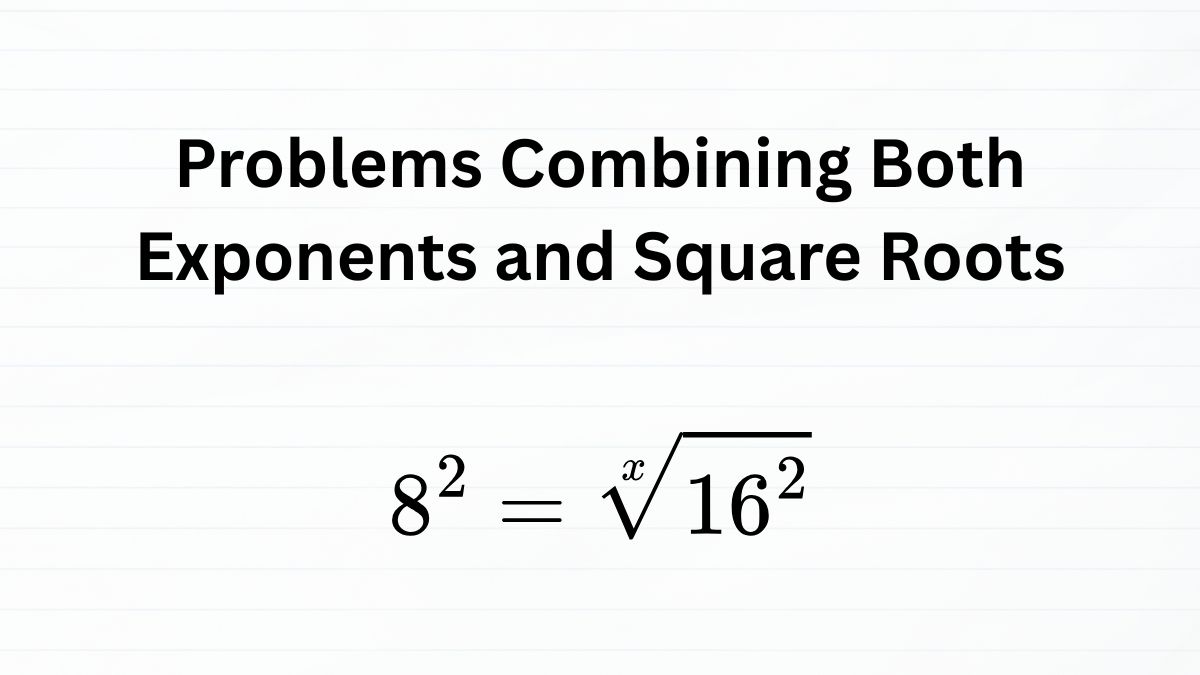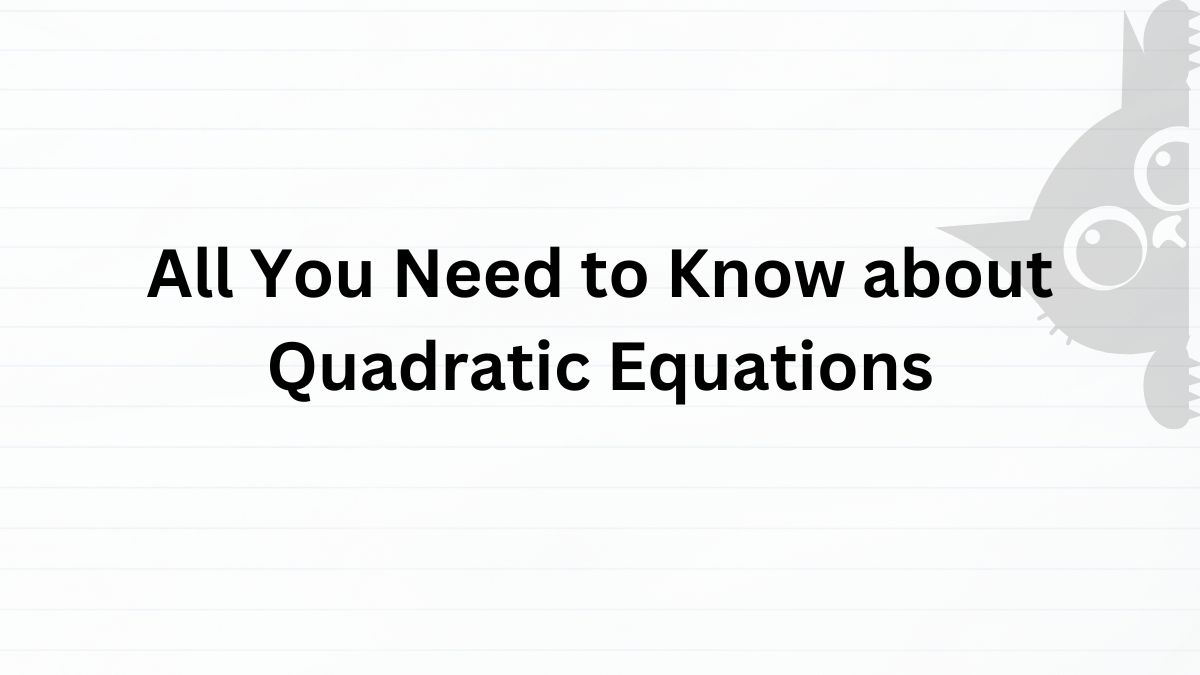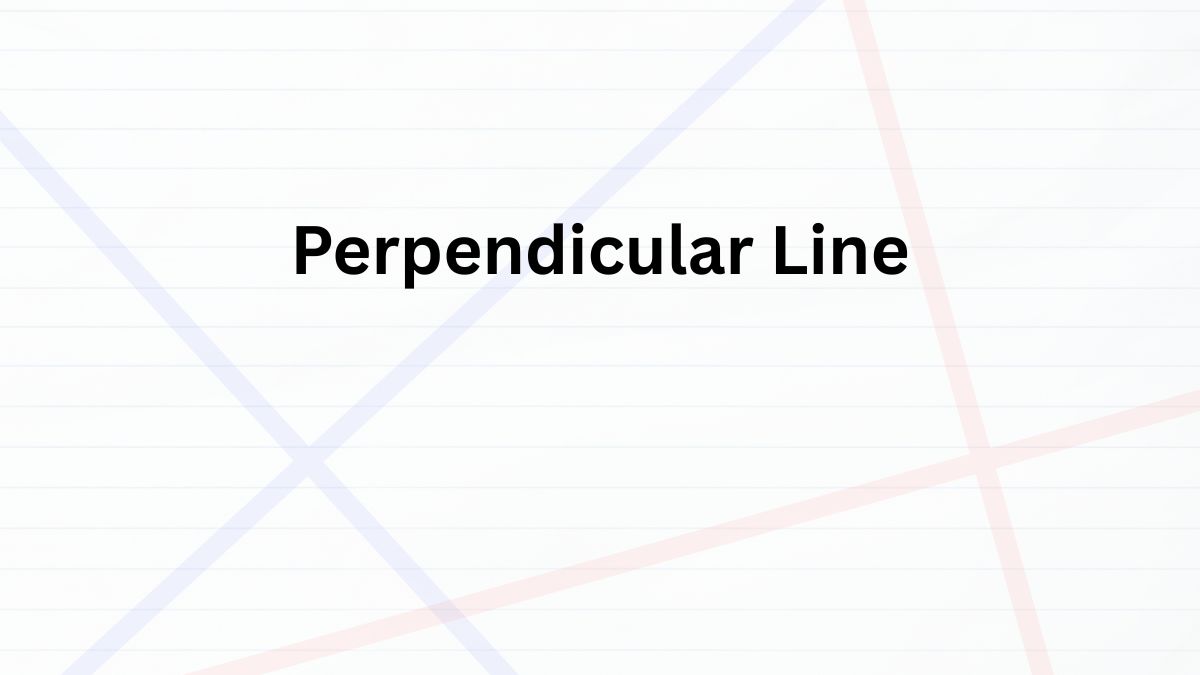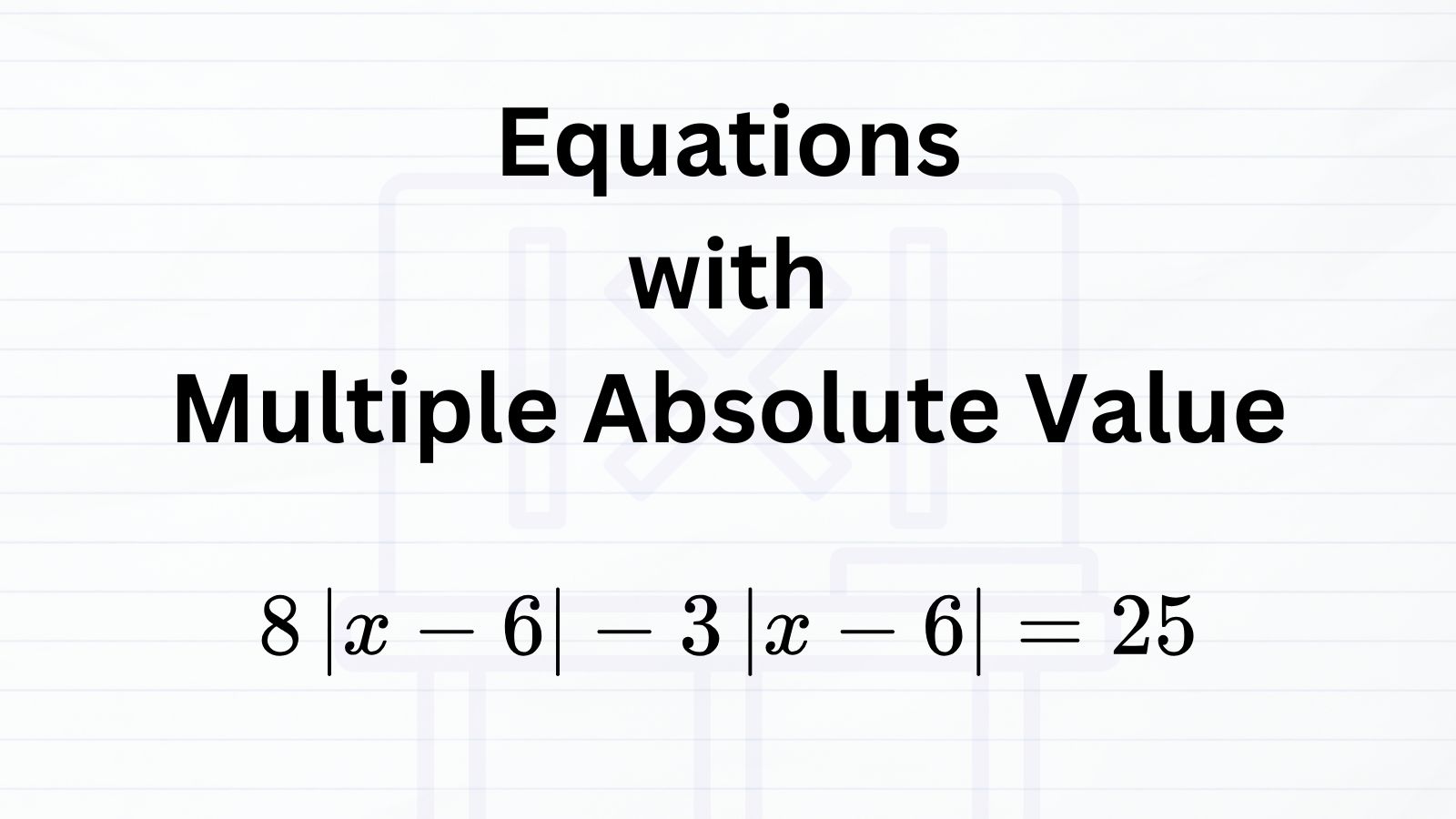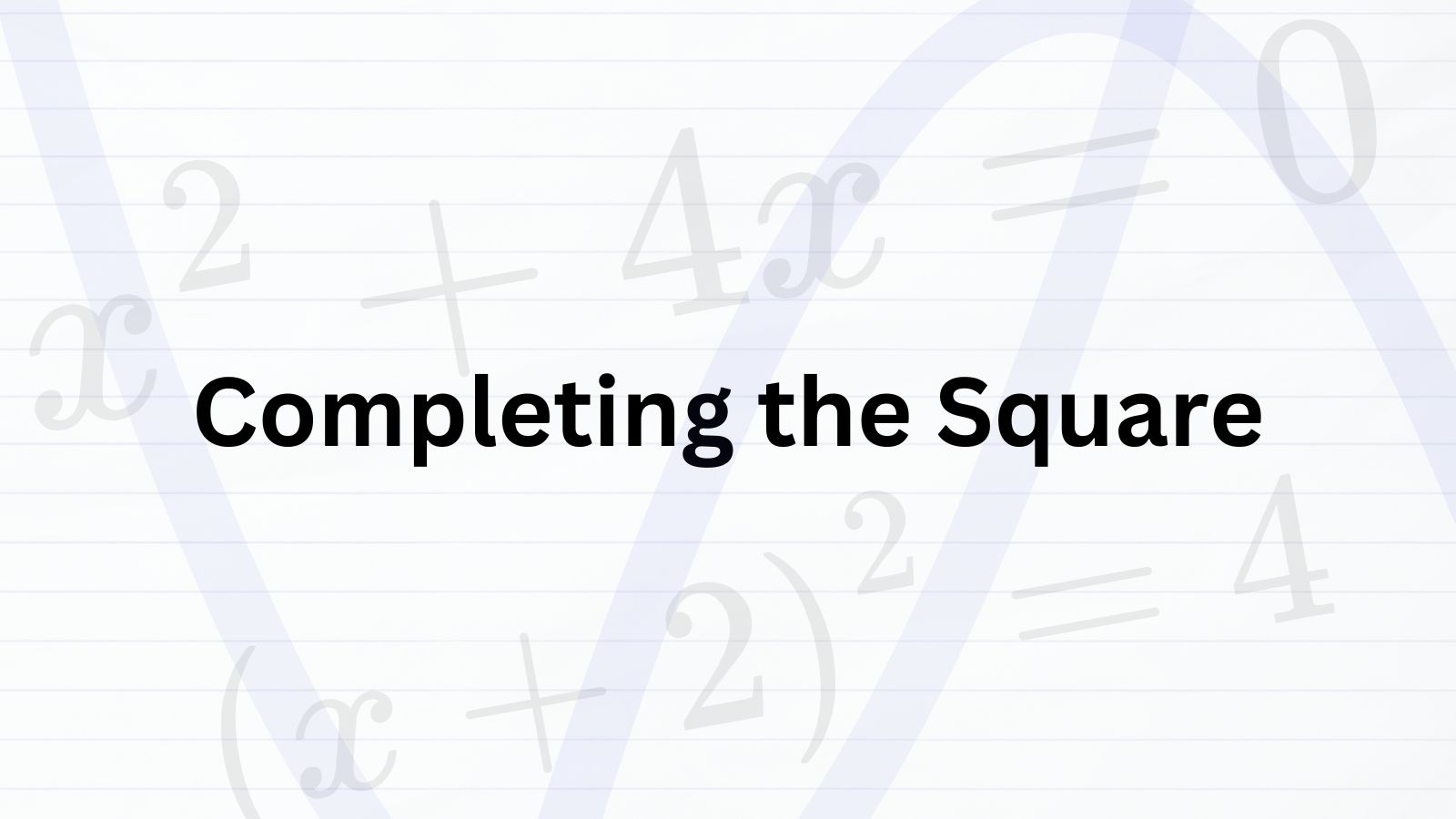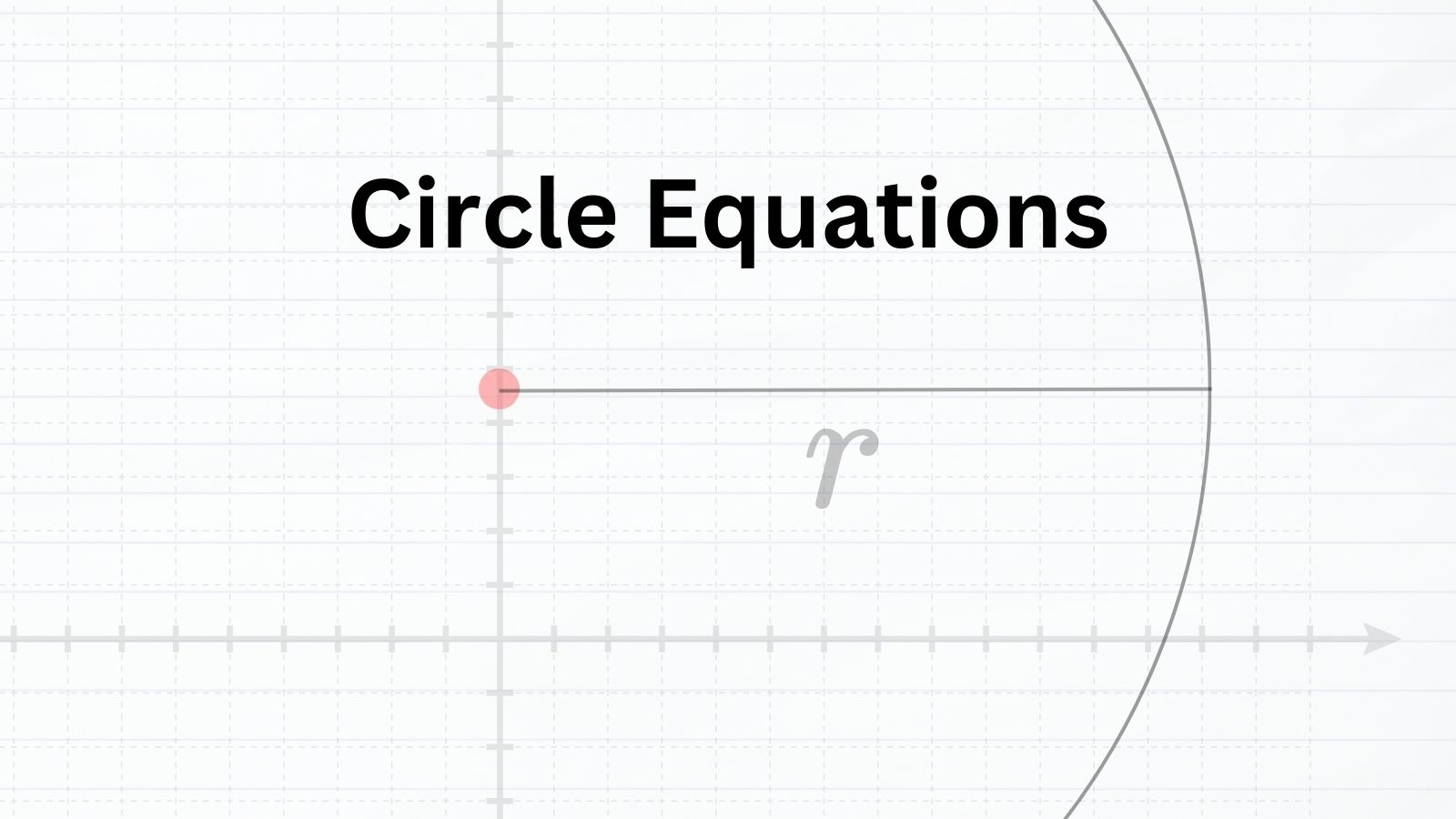
What You Need to Know About Circle Equations on the SAT
Table of Contents
On the SAT, you will face questions about linear, quadratic, exponential, and circle equations. Of these, exponential and circle equations tend to be trickier than the other two. Still, once you get used to their forms, your accuracy on these questions will become much more reliable.
This article focuses on circle equations. We will review the essential points you need to know and then look at the common question patterns that appear on the test.
Circle Equations
On the coordinate plane, different equations take on different shapes:
- Linear equations appear as straight lines.
- Quadratic equations show up as parabolas.
- Exponential equations begin with a gentle curve and then rise or fall more sharply.
As the name suggests, the equation of a circle is drawn as a circle on the plane.
Basic Formula for Circle Equations
\(\displaystyle (x – a)^{2} + (y – b)^{2} = r^{2}\)
- \(a\) is the x-coordinate of the circle’s center.
- \(b\) is the y-coordinate of the circle’s center.
- \(r\) is the radius (the distance from the center to any point on the circle).
For example, if \(a = 0\) and \(b = 0\), the circle is centered at the origin (0, 0). The equation then becomes \(x^{2} + y^{2} = r^{2}\).
How to Find Radius?
There are generally two ways to determine the radius of a circle. Depending on what pieces of information are given, we have to think which approach to use.
When Center And One Point On the Circle Are Given
If you know the center of a circle, and also one point lying on the circle is given, you can determine the radius by calculating the distance between the circle and the point. This is because radius is a half way from the center to one of the endpoint of a circle.
To find the distance, you can use either of two methods:
- Using the Pythagorean’s Theorem
- Using the formula for distance between two points
Let’s see how these two methods work.
Using the Pythagorean’s Theorem
If you know two sides of a right triangle, you can find the missing side with the Pythagorean’s theorem.
Pythagorean’s Theorem
For a right triangle with legs \(a\) and \(b\), and hypotenuse \(c\):
\(a^{2} + b^{2} = c^{2}\)
For example, the center of a circle is at (1, 4), and a point on the circle is at (4, -3). We want to find the radius.
Think of drawing a right triangle between these two points:
- The difference in the \(x\)-coordinates is \(|4 – 1| = 3\)
- The difference in the \(y\)-coordinates is \(|-3 – 4| = 7\)
So the two legs of the triangle are 3 and 7, and the radius is the hypotenuse.

Since we know that two sides of the triangle are 3 and 7, respectively and the hypotenuse missing, we can use the Pythagorean’s theorem to find the missing hypotenuse.
Now, apply the theorem.
\(3^{2} + 7^{2} = c^{2}\)
\(9 + 49 = c^{2}\)
\(c^{2} = 58\)
\(c = \sqrt{58}\)
Therefore, the radius of the circle is \(sqrt{58}\).
Using the formula for distance between two points
You don’t always have to draw a triangle to apply the Pythagorean Theorem. There is a direct formula, often called the distance formula, which comes from the same idea.
Distance Formula
For two points \((x_{1}, y_{1})\) and \((x_{2}, y_{2})\), the distance \(d\) can be calculated by,
\(d = \sqrt{(x_{2} – x_{1})^{2} + (y_{2} – y_{1})^{2}}\)
This works because the difference in the \(x\)-coordinates gives the horizontal side of a right triangle, and the difference in the \(y\)-coordinates gives the vertical side. Squaring and adding them is exactly what the Pythagorean Theorem does.
So, whether you picture the right triangle or go straight to this formula, you are really using the same principle. The formula just saves time, especially on the SAT, where you want to be both accurate and efficient.
When Endpoints of the Circle Passing the Center Are Given
If you are given two points on a circle such that the line between them goes through the center, that line is a diameter of the circle. By definition, the radius is half of the diameter.
So, the strategy is simple: first find the distance between the two endpoints (that gives you the length of the diameter), then divide by two to get the radius.
Distance Formula (Halved)
For endpoints \((x_{1}, y_{1})\) and \((x_{2}, y_{2})\) that form a diameter, the radius \((r)\) is
\(\displaystyle r = \frac{\sqrt{(x_{2} – x_{1})^{2} + (y_{2} – y_{1})^{2}}}{2}\)
For example, suppose a circle has two points (2, 5) and (8, 5), and we are told the line between them passes through the center. How can we find the radius?
The distance between the two endpoints is,
\(d = \sqrt{(8-2)^{2} + (5-5)^{2}} = \sqrt{6^{2} + 0^{2}} = \sqrt{6^{2}} = 6\)
This length is the diameter. Since the radius is half of the diameter, we divide by 2:
\(r = \frac{6}{2} = 3\)
Therefore, the radius of the circle is 3.
Patterns and Strategies
Case 1 (Identify the Center and Radius)
Explanation
Basic Formula for Circle Equations
\(\displaystyle (x – a)^{2} + (y – b)^{2} = r^{2}\)
- \(a\) is the x-coordinate of the circle’s center.
- \(b\) is the y-coordinate of the circle’s center.
- \(r\) is the radius (the distance from the center to any point on the circle).
Look at the equation \((x-3)^{2} + (y+2)^{2} = 25\).
- The center is at \((3, -2)\)
- Since \(25 = 5^{2}\), the radius is \(5\).
So, this circle has its center shifted 3 units to the right and 2 units down from the origin, and every point on the circle lies exactly 5 units away from that center.
Case 2 (Equation Transformation)
Explanation
We start with the equation: \(x^{2} + y^{2} -6x + 4y -3 = 0\).
First, group the x-terms and y-terms on the same side.
\((x^{2} -6x) + (y^{2} +4y) = 3\)
Our goal is to rewrite this equation in the standard circle form. To do that, we need to complete the square for both groups.
- For \(x^{2}-6x\), take half of \(-6\), which is \(-3\), and square it. That gives \(9\).
- For \(y^{2}+4y\), take half of \(4\), which is \(2\), and square it. That gives \(4\).
We add these values inside the parentheses to make perfect squares. But to keep the equation balanced, we also add the same numbers to the right-hand side. So the equation becomes:
\((x^{2} -6x +9) + (y^{2} +4y +4) = 3 + 9 + 4\)
Now rewrite the left-hand side as perfect squares:
\((x-3)^{2} + (y+2)^{2} = 16\)
This is now in standard form. From here, it’s easy to identify the circle’s features. The center is at (3, -2), and because \(16 = 4^{2}\), the radius is \(4\)
Case 3 (Finding the Radius from the Center)
Explanation
We are given the circle \((x-3)^{2}+(y-2)^{2}=r^{2}\). From this, we can immediately see that the center is at \((3, 2)\).
The radius of a circle is the distance from the center to any point on the circle. To find this distance, we use the distance formula:
Distance between two points
For two points \((x_{1}, y_{1})\) and \((x_{2}, y_{2})\), the distance is
\(d = \sqrt{(x_{2} – x_{1})^{2} + (y_{2} – y_{1})^{2}}\)
- Center: \((3, 2)\)
- One of the point: \((-1, 2)\)
So, the radius is \(r = \sqrt{(-1 – (3))^{2} + (2 – 2)^{2}} = \sqrt{(-4)^{2} + 0^{2}}\)
\(= \sqrt{16} = 4\)
Therefore, the radius of the circle is 4.
Case 4 (Word Problem: Understanding the Meaning of Each Value)
Explanation
The given equation is \((x+7)^{2} + (y-m)^{2} = 121\).
This equation of a circle is in standard form:
Basic Formula for Circle Equations
\(\displaystyle (x – a)^{2} + (y – b)^{2} = r^{2}\)
- \(a\) is the x-coordinate of the circle’s center.
- \(b\) is the y-coordinate of the circle’s center.
- \(r\) is the radius (the distance from the center to any point on the circle).
So, the center is \((h, k)\) and the radius is \(\sqrt{r^{2}}\).
Here, \((x+7)^{2}=(x-(-7))^{2}\), so \(h = -7\). Also, \((y-m)^{2}\) means \(k = m\).
Since \(r^{2} = 121\), the radius is \(r = 11\).
Therefore, the center is at \((-7, m)\) and the radius is \(11\).
Practice Questions
Question 1
Explanation
First, it’s best to visualize the situation described in the question. If we sketch the setup, we can draw a circle and label the given coordinate points as shown below.

Note that the positions of points \(A\) and \(B\) are arbitrary. The coordinates illustrated are for visual reference only, not their exact locations.
Even though the actual positions of \(A\) and \(B\) may differ from the diagram, you can notice from the illustration that the line connecting point \(A\) to the center of the circle always represents the radius. We’ll use this fact to calculate its length.
Distance between Two Coordinate Points
If we know the coordinates of two points \(A\) and \(B\), the distance between them can be found using the distance formula:
\(AB = \sqrt{(x_{A} – x_{B})^{2} + (y_{A} – y_{B})^{2}}\)
Let’s apply this formula to find the radius of the circle.
- Center: \((h, k)\)
- Point \(A\): \((h + 3, k + \sqrt{13})\)
Now, substitute these coordinates into the distance formula:
\(\sqrt{(h – h + 3)^{2} + (k – k + \sqrt{13})}\)
\(= \sqrt{3^{2} + (\sqrt{13})^{2}} = \sqrt{9 + 13} = \sqrt{22}\)
Therefore, the radius of the circle is \(\sqrt{22}\).
Since the triangle \(\angle ACB\) forms a right triangle, we can apply the Pythagorean theorem. We already know that two of its sides measure \(\sqrt{22}\) because any line drawn from the circle’s center to a point on the circle represents the radius.
For any right triangle, the Pythagorean theorem can be used as long as the lengths of two sides are known.
Pythagorean’s theorem
For any right triangle with sides \(a\) and \(b\), and the hypotenuse \(c\),
\(a^{2} + b^{2} = c^{2}\)
In this problem, both sides are \(\sqrt{22}\), so we can set up the equation as follows:
\((\sqrt{22})^{2} + \sqrt{22})^{2} = c^{2} \)
\(22 + 22 = c^{2}\)
\(c^{2} = 44\)
Finally, take the square root of both sides:
\(c = 2 \sqrt{11}\).


